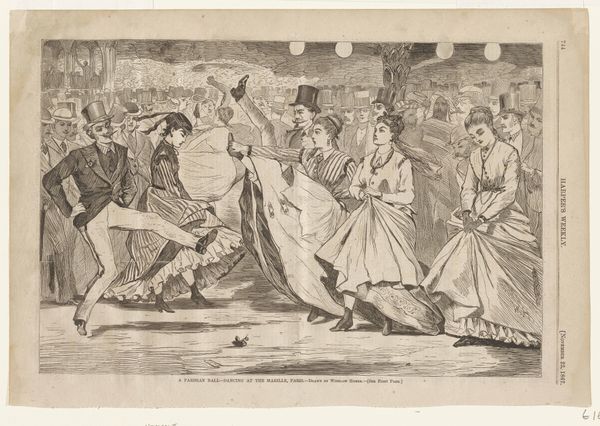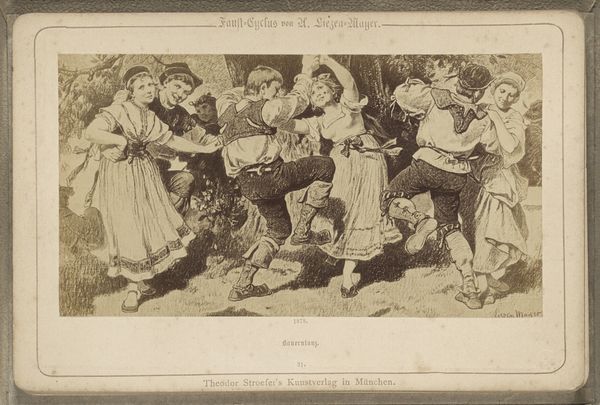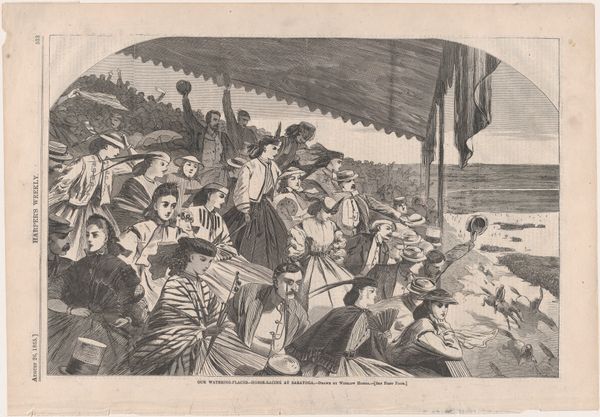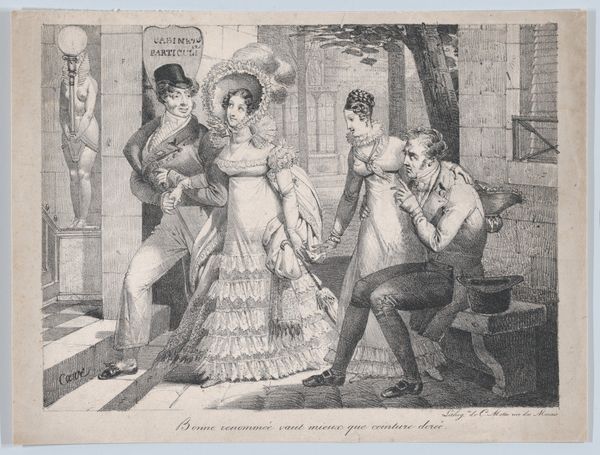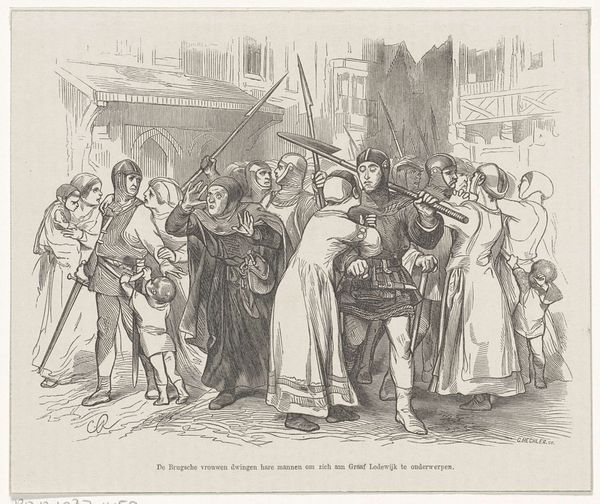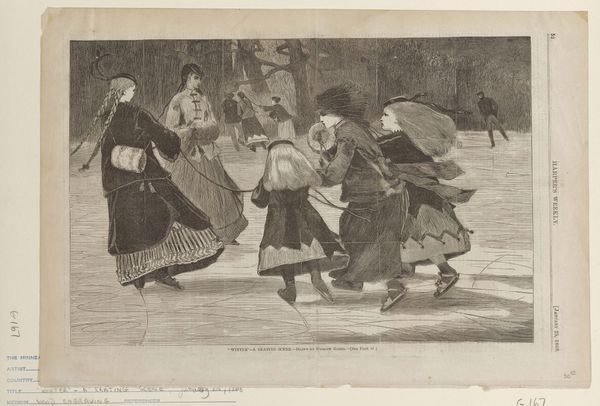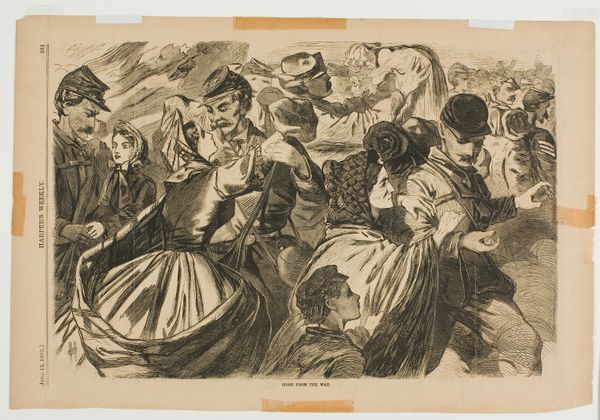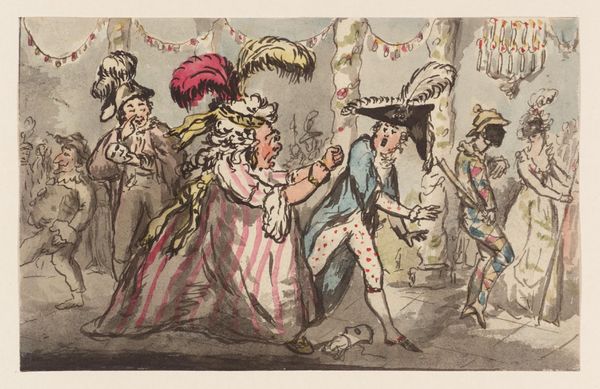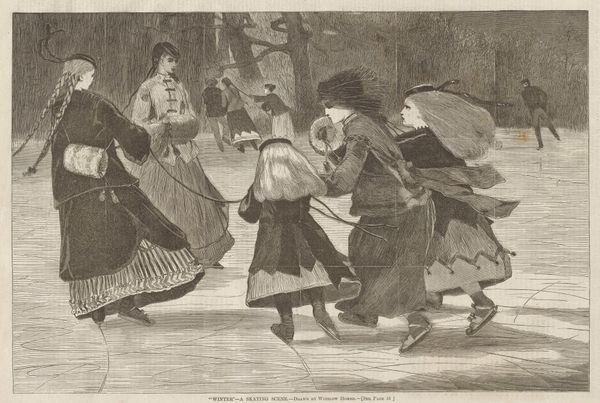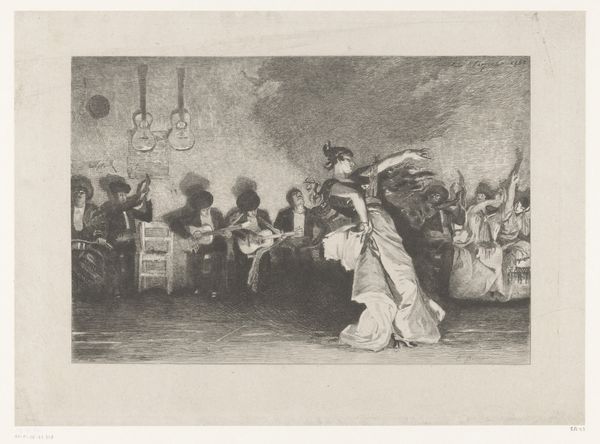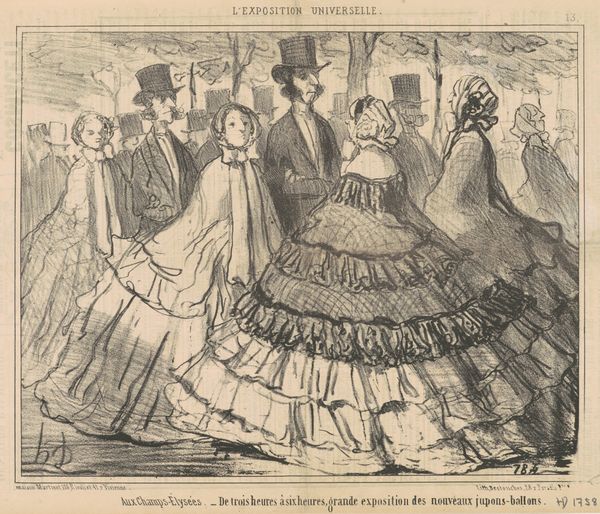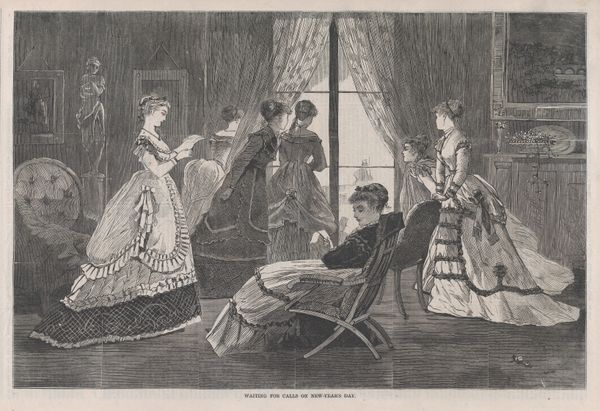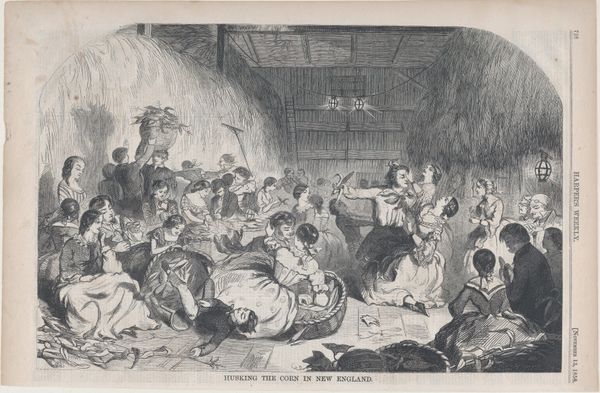
A Parisian Ball – Dancing at the Mabille, Paris (from "Harper's Weekly," Vol. XI) 1867
0:00
0:00
drawing, graphic-art, print, ink, pen
#
drawing
#
graphic-art
#
ink drawing
# print
#
impressionism
#
pen sketch
#
pencil sketch
#
figuration
#
ink
#
men
#
pen
#
genre-painting
#
history-painting
Dimensions: image: 9 1/8 x 13 3/4 in. (23.2 x 34.9 cm) sheet: 11 1/16 x 15 15/16 in. (28.1 x 40.5 cm)
Copyright: Public Domain
Editor: So, this is Winslow Homer’s "A Parisian Ball – Dancing at the Mabille, Paris," a print from 1867. It's full of figures and movement; the sketchiness almost makes it feel like I'm there, but in a fleeting way. How do you read a piece like this? Curator: I see a careful documentation of the process of leisure and the specific materials used to disseminate it. Homer created this for Harper's Weekly, making it a commodity of information and entertainment. Note the engraving lines – they weren’t just artistic choices but the very means of mass production. What does it say about art when it is primarily labor and industry, made for broad consumption? Editor: That's interesting! I hadn't really considered the printmaking aspect. Does that mean it was like a newspaper photograph of its time? Curator: In a way, yes, but also much more. Think about the hierarchy implicit here: Homer, the artist; the engravers who translate his vision; and the reading public, the consumers. How does that hierarchy affect our understanding of "artistic value" and creative labor? Are these distinctions still relevant today? Editor: That makes me think about all the work that goes into making art accessible. I still tend to prioritize the artist's original hand, but understanding the process is also revealing. Curator: Exactly. Consider also the paper used. Cheaper wood pulp, perhaps, for wider reach? This artwork challenges us to consider not just what is depicted, but *how* and *for whom* it was produced. How are contemporary artists manipulating these boundaries and processes today? Editor: I never thought I'd be this interested in the nitty-gritty details of its production, but understanding its context gives me a completely new perspective. Curator: It shows us art is never divorced from labor, technology, and the machinery of culture. Looking closely at the production and the means by which artworks achieve visibility enriches the overall picture and makes the entire cultural industry much more transparent.
Comments
No comments
Be the first to comment and join the conversation on the ultimate creative platform.
